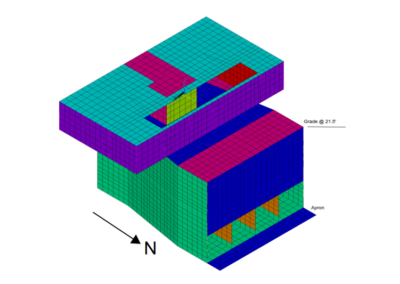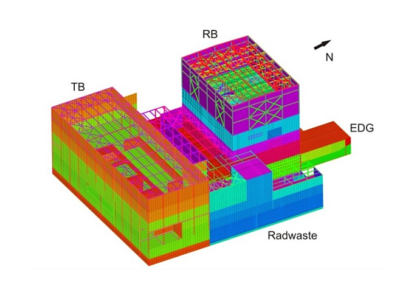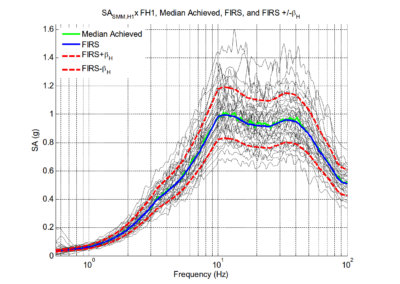Pilgrim Nuclear Power Station Seismic Analysis
Probabilistic soil-structural interaction analysis for detailed seismic risk assessment of power plantPROJECT TYPE
Soil-Structure Interaction Analysis
LOCATION
OWNER
SC Solutions collaborated closely with the complete SPRA team, including the equipment fragility analysts and PRA logic modelers, to provide probabilistic seismic structural response results (ISRS and building relative displacements) and structural fragilities. Key aspects of SC Solutions’ tasks include:
- Detailed soil structure interaction (SSI) models were developed for primary plant structures including the Intake Structure and Reactor Building (RB) complex (Reactor Building (RB), Turbine Building (TB), Radwaste (RW) Building, and Emergency Diesel Generator (EDG) Building). These models were sufficiently detailed to capture realistic structural response, which dramatically reduced the need for simplifications, sensitivity studies, and conservatively biased assumptions.
- RB building complex SSI model that accounts for deep embedment, variable foundation depths, structure-soil-structure interaction (SSSI) effects, and interaction across seismic isolation joints between adjacent buildings.
- Intake Structure SSI model that accounts for effects of 3-sided embedment and variable topography due to the adjacent intake channel and wing walls.
- Probabilistic SSI analysis that accounts for uncertainties and randomness in ground motions, soil properties, and structural properties. The parameter uncertainties were sampled by Latin Hypercube Sampling (LHS) on their respective distributions and paired with independent ground motion realizations to generate 30 unique model and ground motion variations.
To efficiently perform the necessary sensitivity and verification analyses – up to 90,000 interaction nodes using the Direct Method – and the required 30 probabilistic SSI analyses of these large models, SC Solutions utilized the High Performance Computing (HPC) capabilities of SC-SASSI software developed by SC Solutions. Results of the SSI analysis successfully demonstrated reductions in seismic risk compared to alternative simplified methods.



